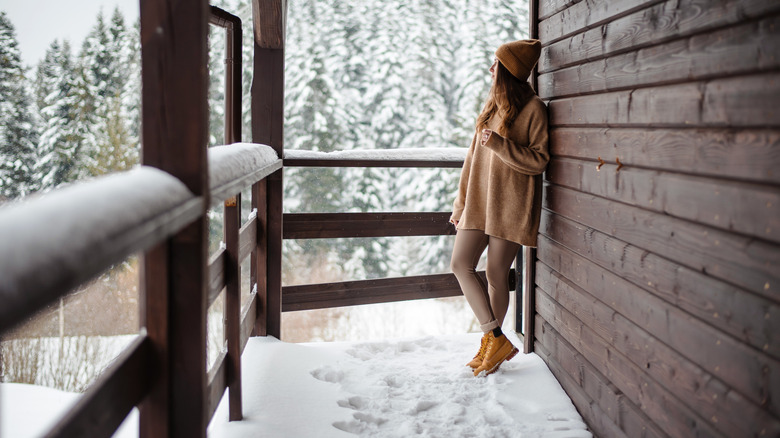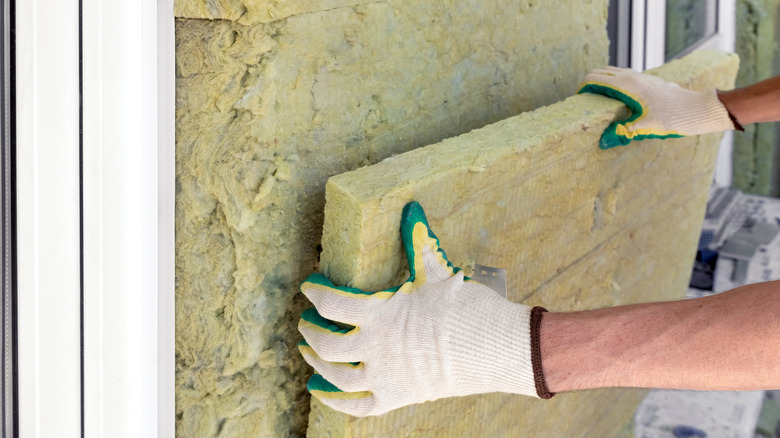Why You Should Consider Installing Heat Insulation For Your Balcony
We may receive a commission on purchases made from links.
Imagine being on your balcony in mid-summer — what was once a haven for taking in the good weather has transformed into a sun-drenched inferno. The furniture feels like it's been preheated, and the floor radiates enough heat to cook an egg. The scene is just as uninviting six months later when icy winds and frost make an appearance.
It might be time to consider heat insulation for your balcony if you find yourself longing for the cozy comfort of your indoor space during these times. Insulation works in your home year-round to regulate temperature, and it will also allow your balcony to be inviting regardless of the season. It achieves this through a process that uses materials to minimize heat transfer. These materials — including mineral wool and polystyrene foam — act as barriers that reduce the impact of weather extremes. In short, insulation can reflect heat during summer and retain warmth during winter, ensuring a more pleasant environment on your balcony.
Advantages of heat insulation for your balcony
Comfort is a key reason to invest in heat insulation for your balcony. A well-insulated balcony creates a more temperate microclimate without discomfort when it's hot, while it also minimizes cold drafts when it's cold. Just think of stepping onto your balcony for a morning yoga session during the sweltering summer months without the floor scorching your bare feet, or being able to keep an eye on your children making snow angels without feeling the biting cold during winter.
Beyond your personal comfort, insulation also protects your balcony from weather extremes. Prolonged exposure to heat can damage your balcony's structure and could weaken paint or wooden fixtures. Meanwhile, winter freeze-thaw cycles can lead to cracks and long-term damage. In these cases, insulation acts as a buffer that can safeguard your balcony and extend its lifespan.
But perhaps the icing on the cake of installing heat insulation on your balcony is energy efficiency. Having proper insulation can reduce energy waste by stabilizing temperatures. This unburdens your home's heating and cooling systems, which translates to lower energy bills. The cost savings, from both low energy consumption and preventing repairs due to the effects of extreme weather, make insulation a budget-friendly upgrade in the long term.
Achieving an effective heat insulation installation
Choosing the right materials is crucial when installing heat insulation for your balcony. For example, using reflective films or thermal coatings can work wonders on glass surfaces while foam panels and insulated mats are ideal for floors and walls. It's also important to remember that the higher the R-value of the material — which determines its capacity to resist the transfer of heat — the more effective the material will be at insulating your balcony. Just note that there is such a thing as too much insulation, so be careful.
Proper installation is essential to maximize efficiency and prevent any issues, such as forgetting to take into account the balcony's maximum weight limit. So while simple DIY insulation kits are available, such as this VOLLENC window insulation kit, you should consult a professional to help you identify weak spots and ensure seamless coverage. This can be especially helpful if your balcony has a complicated design that might require mixed materials.
Lastly, there's no need to sacrifice style for functionality if you want to protect your balcony from extreme weather. Modern insulation materials come in a variety of finishes, so you can choose one that complements your balcony's existing look to maintain its visual appeal.

